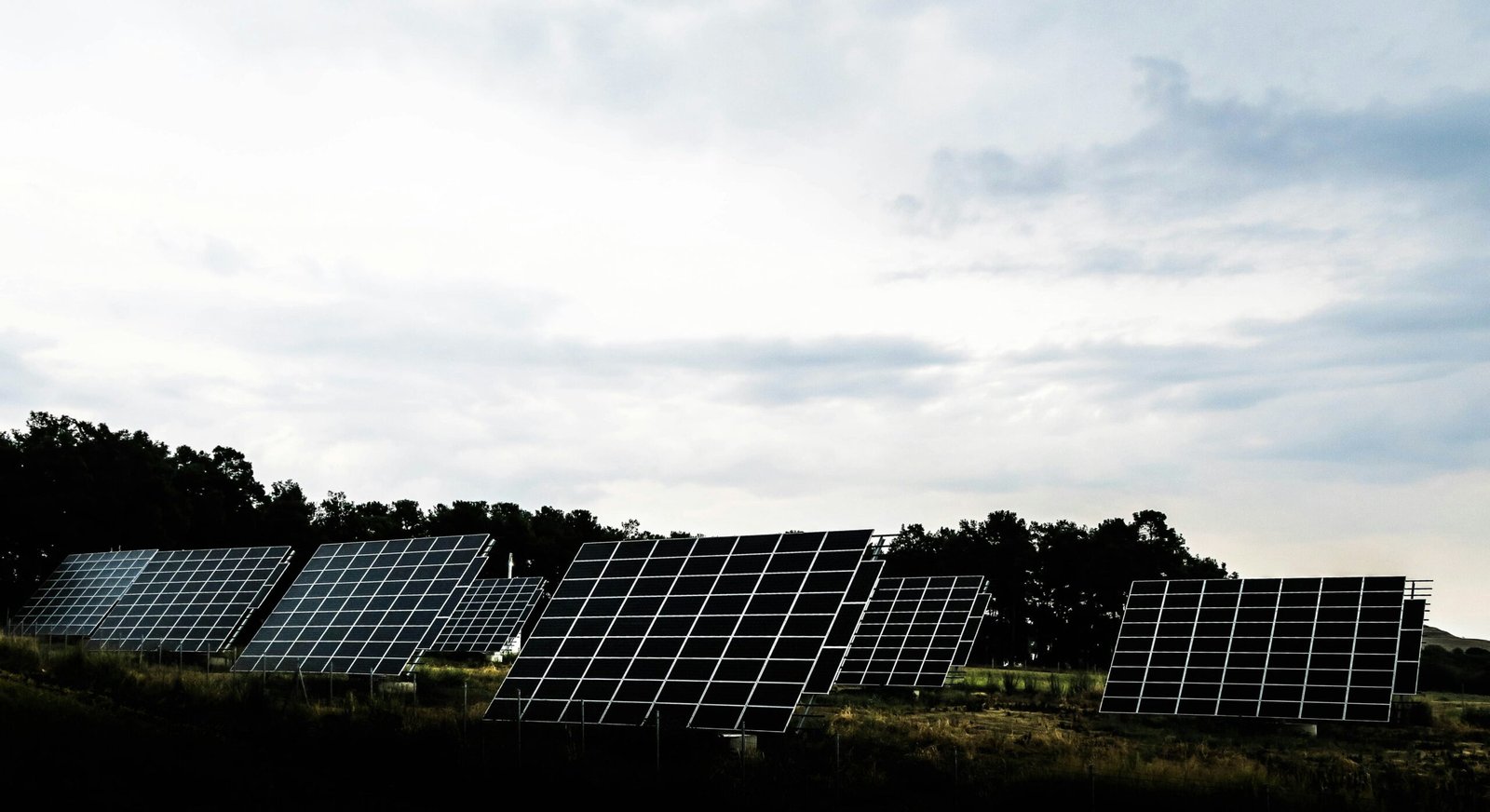
Introduction to Seasonal Solar Maintenance
Solar panels are a significant investment for homeowners and businesses alike, designed to harness solar energy and reduce reliance on traditional power sources. However, to maximize their efficiency and longevity, it is essential to undertake regular maintenance, especially considering the varying challenges posed by different seasonal conditions. Without appropriate care, the performance of your solar panels can diminish, leading to decreased energy output and potentially higher energy costs.
Seasonal solar maintenance is a proactive approach to ensure that solar panel systems remain in optimal working condition throughout the year. Each season presents unique environmental factors that can impact the functionality and efficiency of solar installations. For instance, during the spring, pollen and tree sap might accumulate on the surface, while summer heat can lead to thermal stress. Autumn brings falling leaves and debris, and winter presents challenges like snow accumulation and ice formation. By understanding these seasonal variances, homeowners and businesses can implement targeted solar panel cleaning and maintenance routines, ensuring consistent performance.
One crucial aspect of seasonal solar maintenance is the regular cleaning of solar panels. Accumulated dirt, dust, and organic material can obstruct sunlight from reaching the photovoltaic cells, thus reducing the energy output. Utilizing an effective solar panel cleaning system, like those provided by companies such as Taypro, can significantly enhance the cleaning process, ensuring that every panel is free from obstructions.
Moreover, comprehensive solar plant maintenance encompasses more than just cleaning. It includes inspecting the integrity of the mounting systems, checking the electrical components for any signs of wear, and ensuring that inverters and connectors are operating correctly. Proactively addressing potential issues before they become significant problems can lead to substantial long-term savings and sustained energy production efficiency.
Incorporating a structured seasonal maintenance regimen for your solar panels is not merely a best practice but a vital investment in the longevity and efficiency of your solar energy system. As we delve into specifics for each season, it becomes evident that targeted maintenance activities are crucial for overcoming the unique challenges posed by changing weather conditions.
Spring: Cleaning and Inspection
As winter fades and spring emerges, it is crucial to ensure your solar panel system is free from the debris, dirt, and pollen that may have accumulated during the colder months. Regular cleaning not only optimizes efficiency but also extends the longevity of the panels. A solar panel cleaning routine kick-starts the season on the right note.
Begin your maintenance by inspecting the surface of the panels. Look for visible signs of dirt buildup, bird droppings, and foliage debris. Any obstruction can hinder the panels’ ability to absorb sunlight effectively, reducing overall efficiency. A simple garden hose can often suffice for light cleaning, but for more stubborn dirt, utilizing a soft brush and mild soapy water ensures thorough cleaning without damaging the panels.
For those investing in a more advanced approach, automated solar panel cleaning systems provided by companies like Taypro offer a seamless and efficient alternative. These systems are designed to clean panels methodically, saving time and ensuring consistent results. It’s worth considering an automatic system if you’re managing larger solar plants where manual cleaning would be impractical.
In addition to cleaning, a comprehensive inspection for any winter-induced damage is paramount. Check for cracks, chips, or loose wiring which may have resulted from severe weather conditions. Identifying these issues early will prevent further damage and costly repairs in the future. Moreover, inspecting the structural integrity of the mounting system is crucial; ensuring the panels are firmly in place precludes potential hazards.
By integrating these practices into your seasonal maintenance routine, you can ensure that your solar panels remain efficient and durable. Not only does this foster optimal performance, but it also underscores the importance of regular upkeep within the broader scope of solar plant maintenance. Ultimately, a proactive approach to cleaning and inspection lays the foundation for a productive and hassle-free solar energy experience throughout the year.
Summer: Managing High Temperatures and Peak Sunlight
Summer represents a peak period for solar energy production, largely due to the extended daylight hours and increased intensity of sunlight. However, while higher temperatures and intensified solar exposure can significantly enhance energy generation, they simultaneously introduce several challenges that necessitate meticulous solar panel maintenance.
An essential aspect of optimizing solar panel efficiency during summer is adjusting the tilt of the panels. By setting the correct angle, you can maximize the amount of sunlight absorbed throughout the day. This can be done manually or through automated solar tracking systems that follow the sun’s trajectory, ensuring optimal exposure and energy harvest.
Monitoring solar panels for overheating is another critical task during the summer months. Excessive heat can reduce the efficiency of photovoltaic cells, leading to suboptimal performance. Implementing a solar panel cleaning system can mitigate this issue by removing dust and debris that could insulate panels and increase their temperature. Regular inspection and maintenance of the cooling mechanisms are vital to prevent any form of thermal degradation.
Utilizing automated cooling systems such as passive cooling or active cooling solutions can help manage high temperatures effectively. Passive cooling strategies involve design adaptations that enhance natural air flow around the panels, whereas active cooling entails the installation of fans or water-based systems to dissipate excess heat. Both methods can significantly enhance the efficiency and longevity of solar panels during the hottest months of the year.
Incorporating these strategies into your solar plant maintenance routine will ensure that your solar panels operate at peak efficiency despite the high temperatures and intense sunlight typical of the summer season. Utilizing professional services like taypro, known for their expertise in solar panel cleaning and maintenance, can further augment the effectiveness of these measures, ensuring sustainable energy production year-round.
Autumn: Dealing with Falling Leaves and Decreasing Sunlight
As autumn envelops us with its cooler temperatures and vibrant foliage, solar panel maintenance requires specific attention to ensure optimal functioning. One of the primary challenges during autumn is dealing with falling leaves. Leaves can accumulate on solar panels, obstructing sunlight and reducing the efficiency of energy production. Regular cleaning is therefore essential to keep the panels clear of debris.
Employing a dedicated solar panel cleaning system can prove invaluable during this season. Advanced automated leaf blowers or cleaners can help mitigate the build-up of leaves and other debris on the surface of the panels, ensuring unhindered sunlight exposure. By integrating such technology into your maintenance routine, you can enhance the efficiency of your solar setup.
The lowering intensity and shorter duration of sunlight during autumn also necessitate adjustments to the angle of the solar panels. Optimizing the tilt of the panels to capture the maximum amount of sunlight will effectively address the reduced daylight hours. This angle adjustment not only aids in maximizing energy production but also helps in shedding debris like leaves and dirt more effectively.
Moreover, routine inspections to check for any accumulated dirt, moisture, or organic matter become critical during this season. Utilizing professional services like Taypro, which specialize in solar panel cleaning and solar plant maintenance, can offer significant benefits. Their expertise ensures that all aspects of your solar setup are thoroughly maintained, reducing the chances of inefficiencies arising from seasonal impacts.
In summary, proactively managing your solar panels through regular cleaning, the use of automated systems, and strategic angle adjustments is essential for maintaining optimal efficiency in autumn. These steps will help not only in dealing with the challenges posed by falling leaves and reduced sunlight but also in preserving the longevity and performance of your solar panel investment.
Winter: Snow and Ice Management
Winter presents a unique set of challenges for solar plant maintenance, particularly in regions that experience significant snowfall and ice accumulation. Ensuring your solar panels remain efficient during the colder months involves several proactive measures. Firstly, snow and ice can create layers on the panel surface, obstructing sunlight and significantly reducing energy capture. Implementing an automated snow removal system can offer a practical solution, as these systems help to keep the panels free of snow without the need for manual intervention. Such a system ensures that your solar array continues to generate electricity, maximizing the efficiency of your solar investment.
Manual cleaning, although more labor-intensive, remains an essential part of maintaining solar efficiency in winter. Regular inspection and timely clearance of snow and ice buildup ensure that the panels maintain optimal performance. Utilizing tools specifically designed for solar panel cleaning can mitigate risks of damaging the panel surface while clearing off the accumulations. Safe access to the panels for manual cleaning is crucial, and it is recommended to have the necessary safety equipment and procedures in place.
Furthermore, during winter, the days are shorter, and the sun’s angle is lower. Adjusting the tilt of the solar panels can optimize energy capture during these shorter daylight hours. This adjustment ensures that the panels are positioned to receive maximum sunlight exposure, which is critical for maintaining power generation levels. Additionally, incorporating heating elements within the solar panel cleaning system can assist in melting ice and keeping the surface free of obstructions without physical intervention.
Overall, effective solar plant maintenance in winter requires a combination of automated systems and periodic manual cleaning. By keeping panels clean and free from ice, as well as adjusting their angle for optimal sunlight absorption, solar systems can continue to operate efficiently even in the harshest winter conditions. Adequately preparing for winter weather ensures that your solar investment remains productive and reduces potential downtime.
The Role of Automated Cleaning Systems
Automated cleaning systems are becoming increasingly critical in maintaining solar panels, ensuring they remain efficient and operational regardless of seasonal changes. These systems use advanced technology to simplify and enhance solar panel cleaning, reducing the necessity for manual intervention and the potential for human error. One prominent automated solution is the robotic cleaning system, which employs specialized brushes and water jets to remove dirt and debris from the panels’ surface. This technology is particularly beneficial in areas with heavy dust or frequent bird activity, effectively protecting the panels from efficiency-reducing build-up.
Another add-on to solar plant maintenance is the electrostatic cleaning system, which uses electrically charged particles to attract and remove contaminants without the need for water. This method is advantageous in water-scarce regions, saving precious resources while maintaining optimal performance of the solar installations. By integrating such technologies, solar plant operators can ensure consistent, high energy output regardless of the season.
For regions experiencing frequent rainfall followed by dry spells, hydrophobic coating systems prove useful. These coatings repel water and prevent the accumulation of dirt and dust, naturally reducing the necessity for frequent cleaning. An alternative approach includes utilizing solar panel cleaning systems equipped with AI and ML algorithms, which can predict and schedule cleaning sessions based on environmental data and the panels’ performance metrics. Such intelligent systems not only enhance operational efficiency but also extend the lifespan of the solar panels by preventing wear and tear from excessive manual cleaning procedures.
Implementing automated cleaning systems, such as Taypro’s solar panel cleaning technology, is an investment in maintaining the efficiency and durability of solar installations. These systems ensure that the panels consistently harness the maximum amount of sunlight, translating into higher energy yields over time. By automating routine maintenance tasks, solar operators can focus on other critical aspects of plant operation, secure in the knowledge that their panels are kept in peak condition throughout the year.
Energy Monitoring and Performance Tracking
Consistent monitoring and performance tracking of solar panels are crucial for ensuring optimal energy production and long-term system health. Advanced tools and specialized software have been developed to assist in these tasks, providing valuable insights that help identify inefficiencies, schedule preventive maintenance, and maximize return on investment.
Energy monitoring systems, such as the taypro platform, offer real-time data analytics and reporting capabilities. This allows users to track energy production minutiae, compare actual performance against expected results, and swiftly detect anomalies that may indicate underlying issues. Moreover, these systems can generate historical data trends to aid in forecasting and strategic planning.
When it comes to performance tracking, software platforms can integrate with solar panel cleaning systems to automatically quantify the impact of cleaning schedules on energy output. By correlating cleaning events with energy spikes, users can derive optimal cleaning frequencies, thus fine-tuning maintenance protocols. Through continuous data collection, these platforms help maintain peak efficiency by warning of potential performance drops before they become significant problems.
Solar panel owners and technicians can benefit greatly from more sophisticated energy monitoring solutions. These tools often include modules for remote diagnostics, enabling timely responses to emergent issues without needing immediate physical inspections. Integrating other devices and applications into a comprehensive monitoring setup further amplifies the capability of preventive measures and corrective actions.
In the realm of solar plant maintenance, using an integrated monitoring system can transform maintenance routines. Combining software that offers granular monitoring with proactive maintenance scheduling lowers operational costs and reduces downtime. This methodical approach to performance tracking not only ensures reliability but also prolongs the life of the solar installation, thereby increasing overall efficiency and profit margins.
Having a robust energy monitoring and performance tracking system in place is imperative for any solar installation. It enables efficient scheduling of preventive maintenance, facilitates immediate detection of inefficiencies, and ensures that each component of the solar panel system operates at its peak potential, contributing significantly to the sustainability of solar energy solutions.
Keeping Your Solar Panels Efficient All Year Round
In conclusion, maintaining the efficiency of your solar panels throughout the year necessitates a proactive approach to seasonal solar maintenance. This guide has underscored the importance of adapting your maintenance strategies to address the unique challenges posed by different weather conditions. From spring cleaning to winter preparations, each season demands specific actions to ensure that your solar energy system remains in optimal working order.
Regular solar panel cleaning, for instance, is essential during the spring and summer months when pollen, dust, and bird droppings are prevalent. Ensuring that your panels are free from debris not only enhances their efficiency but also extends their lifespan. Utilizing advanced solar panel cleaning systems can streamline this process, making it less labor-intensive while achieving better results.
Additionally, the importance of checking and maintaining the integrity of your solar panels during the harsh winter months cannot be overstated. Snow accumulation, ice, and extreme cold can all impact the performance of your solar plant. Implementing effective solar plant maintenance strategies such as ensuring proper insulation and using snow guards can prevent damage and ensure continuous energy production even in the harshest conditions.
Adopting these seasonal maintenance practices not only optimizes the performance of your solar panels but also safeguards your investment, enhancing the overall efficiency and reliability of your solar energy system. By implementing the tips and technologies discussed, you can ensure that your panels are well-prepared to tackle any weather condition, providing consistent and sustainable energy throughout the year.




